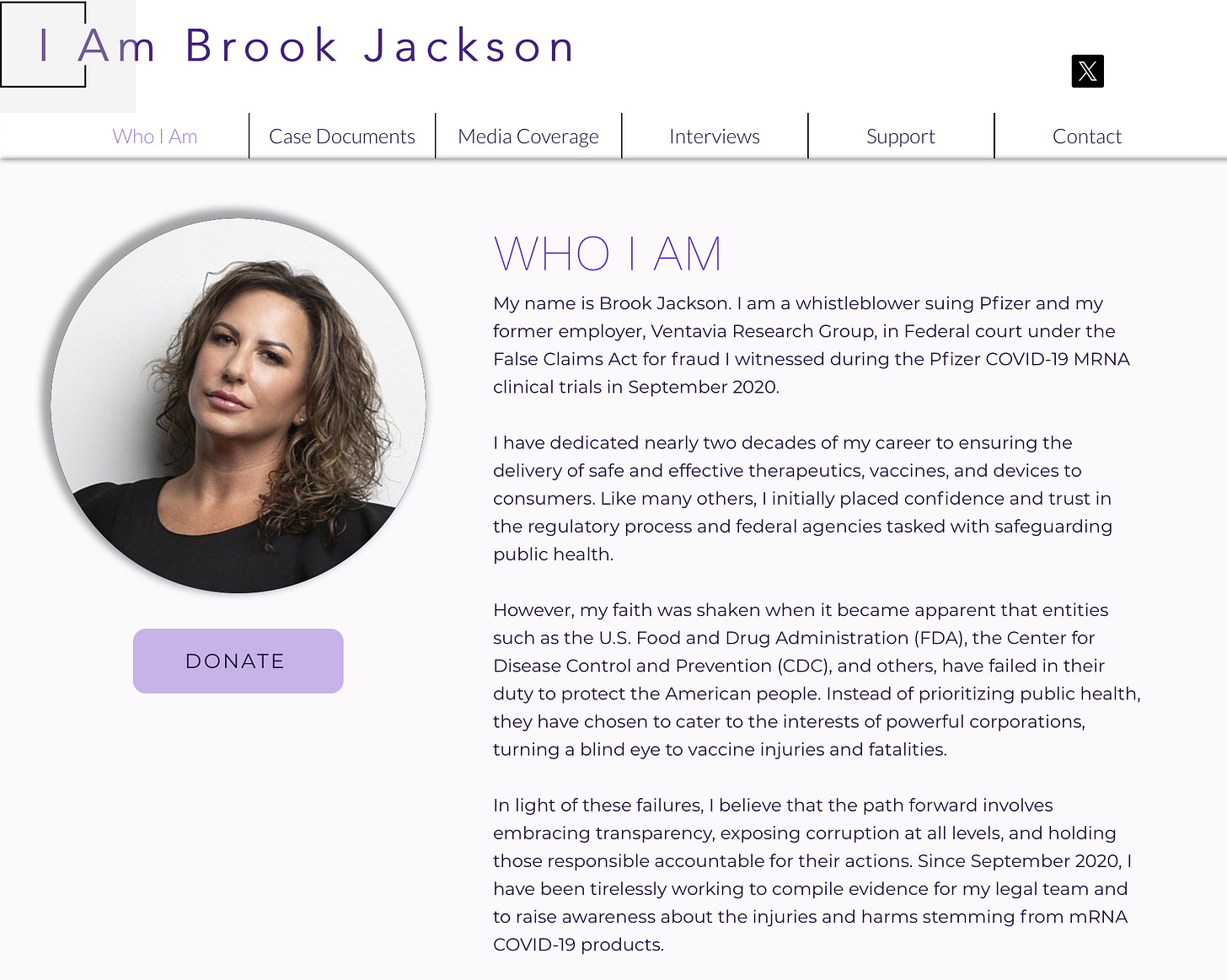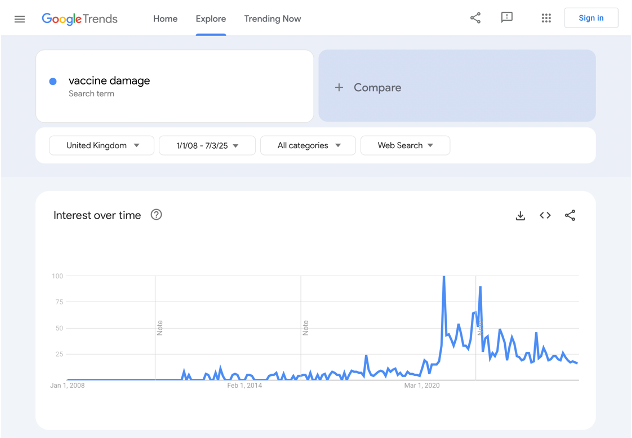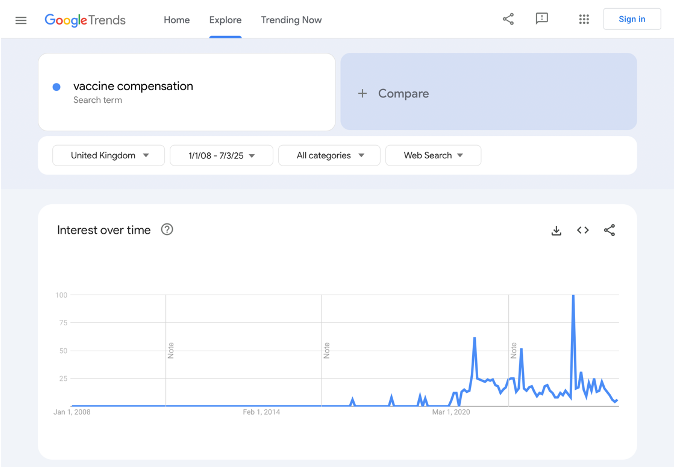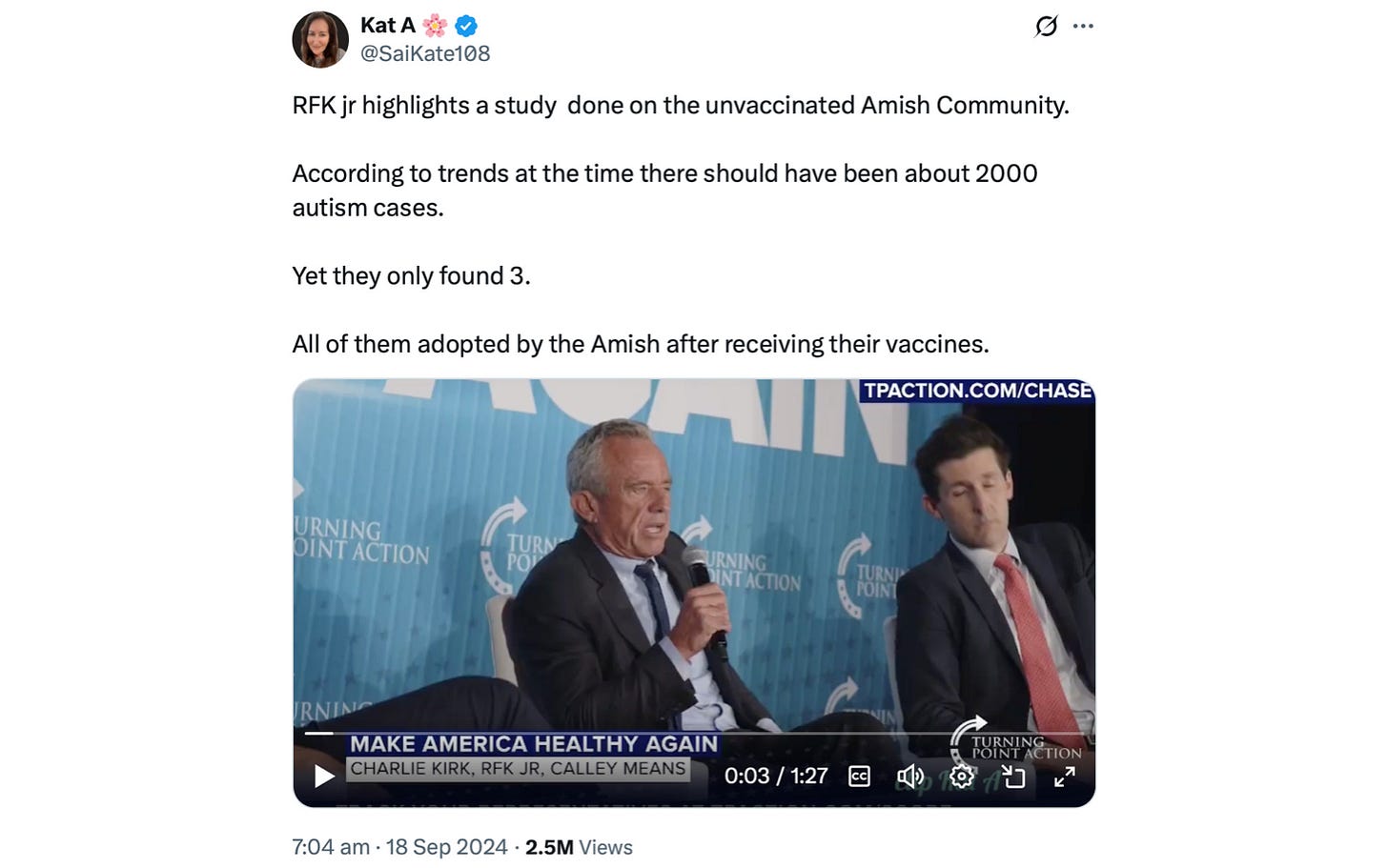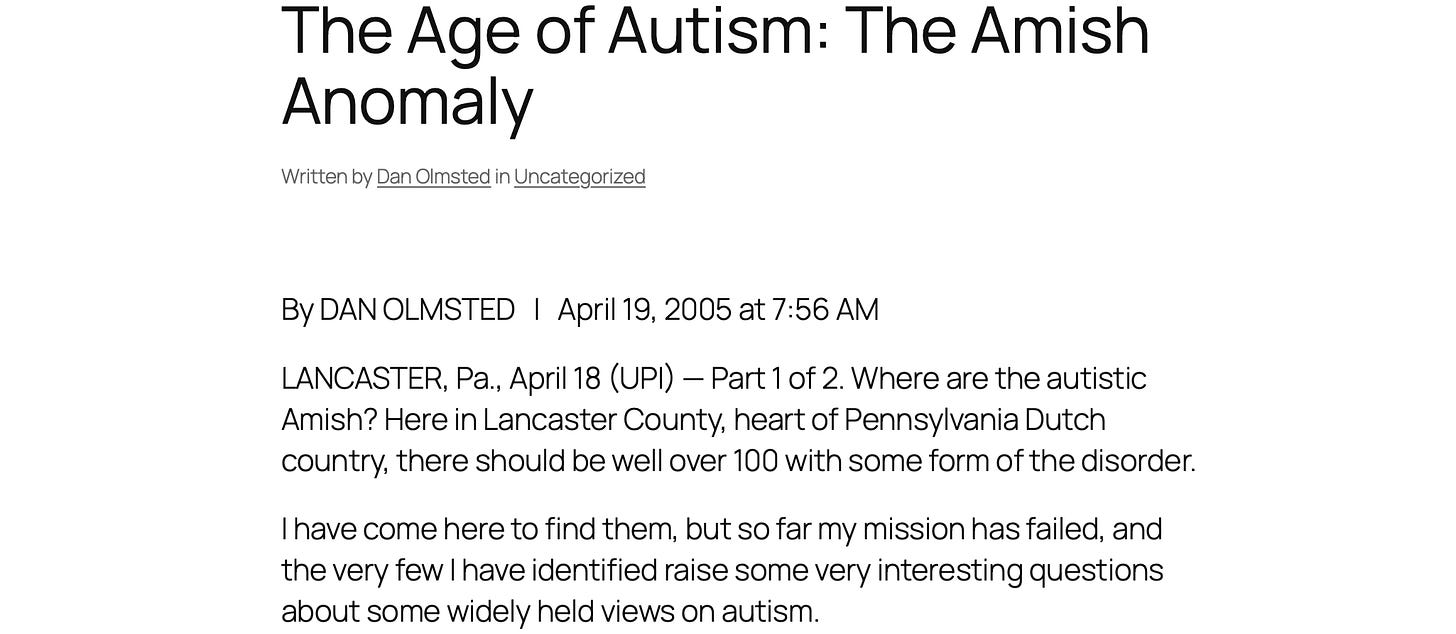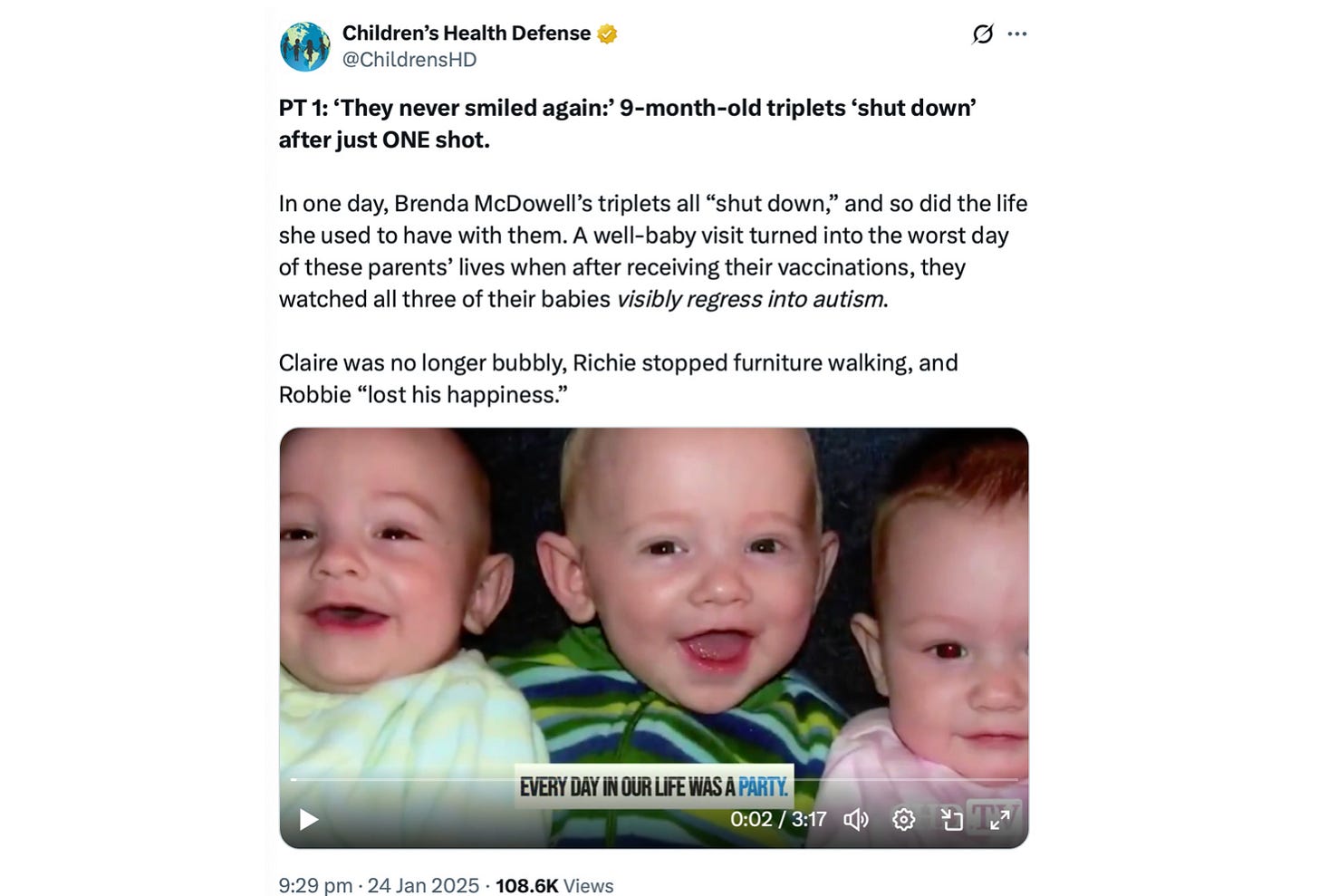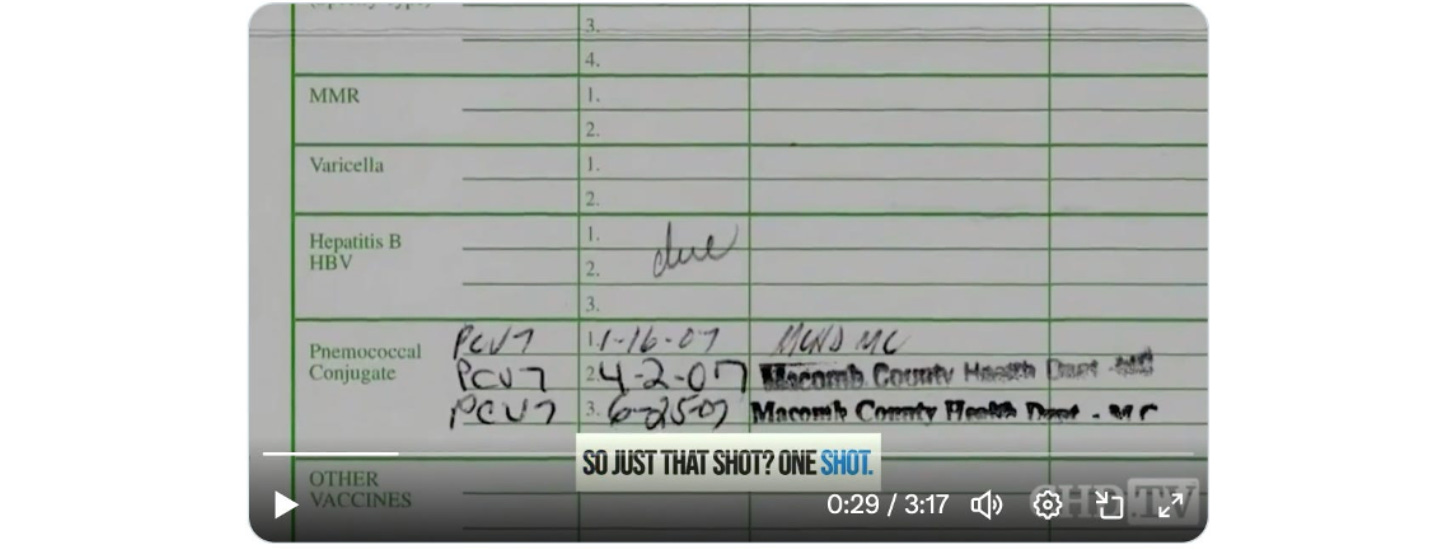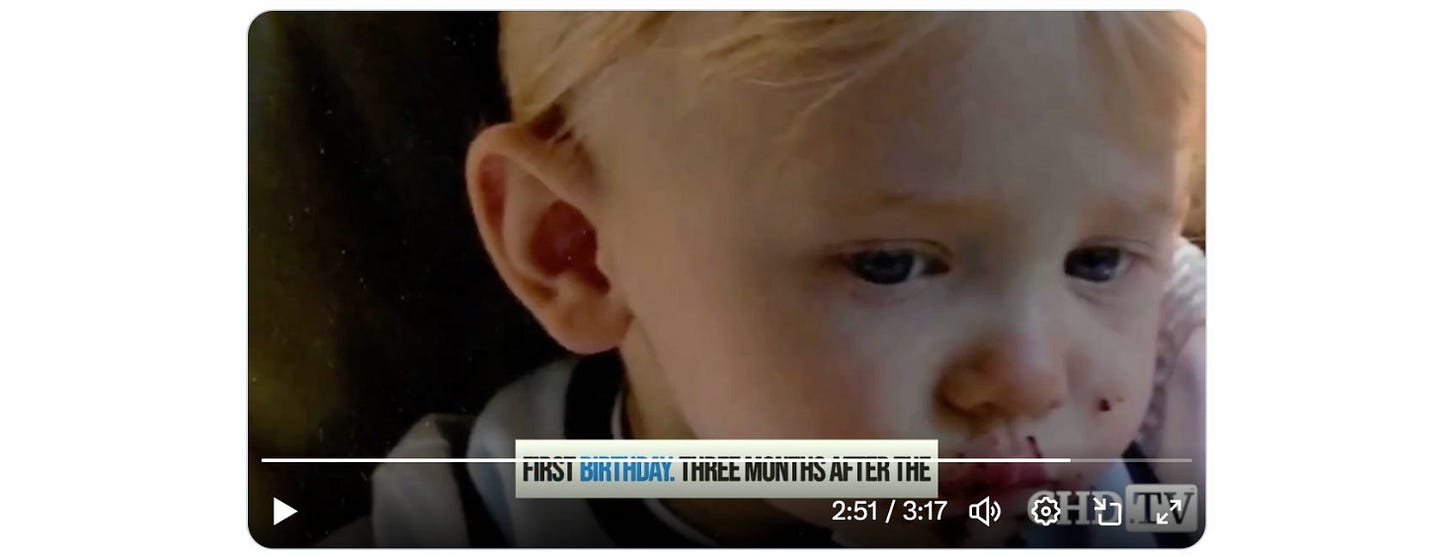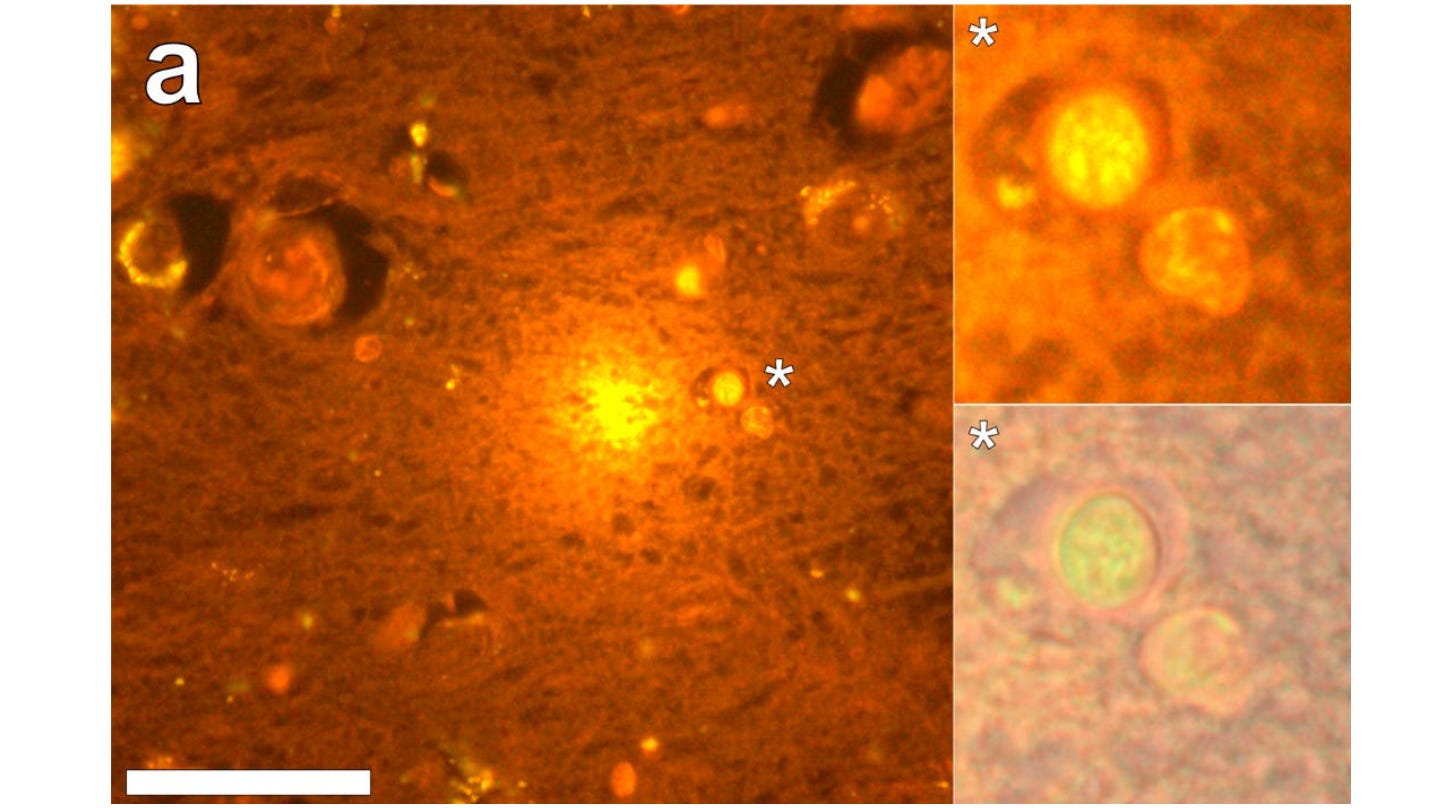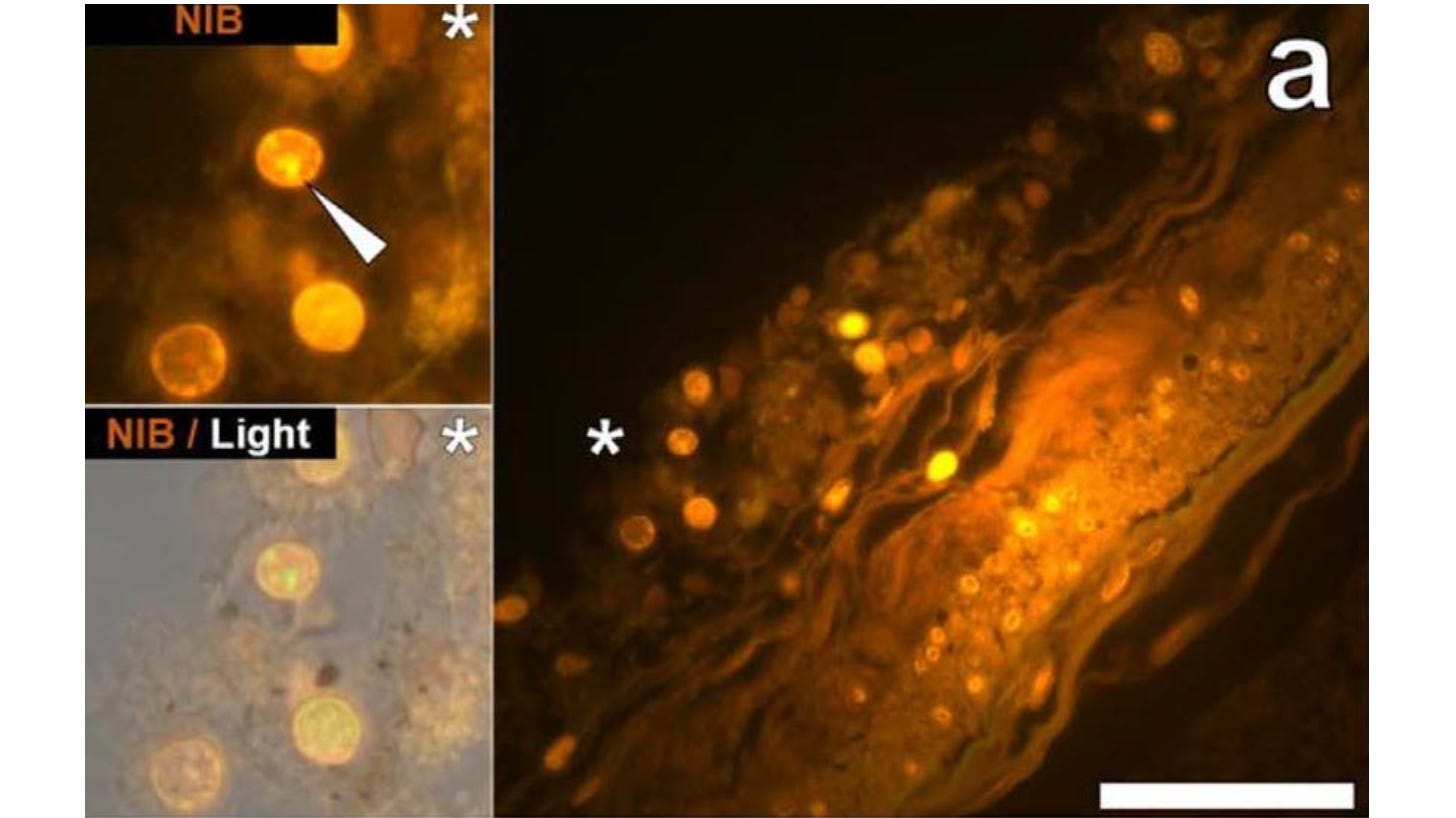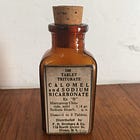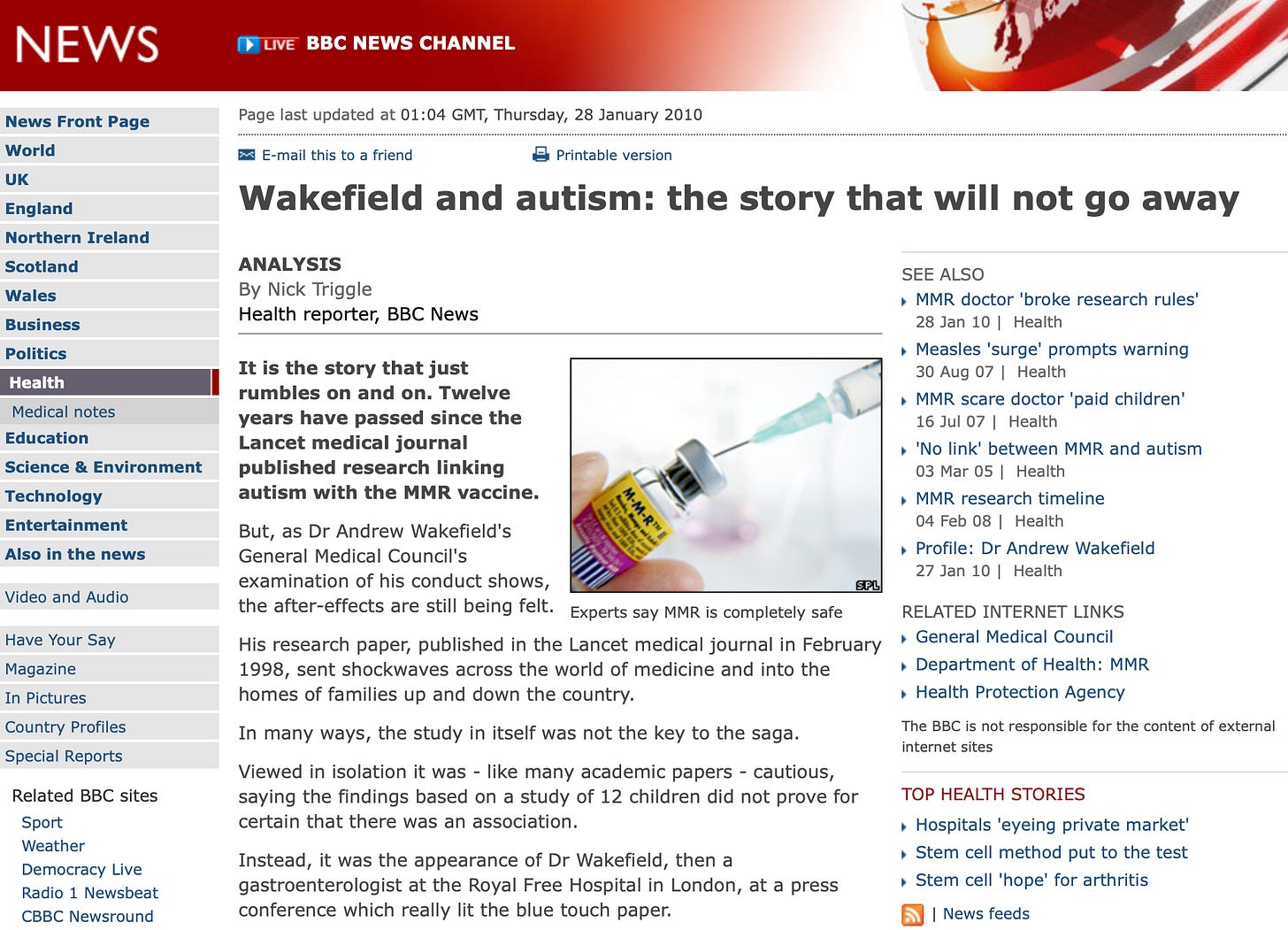Restoring trust in science and health? (part 2 of 2)
NIH Director Jay Bhattacharya on vaccines and autism
Further to this post…
I listened with interest to some of what Jay Bhattacharya — Professor Emeritus of Health Policy at Stanford University, and the new Director of the US National Institutes of Health (NIH) — had to say in this recent long interview with US neuroscientist and podcaster Andrew Huberman:
The podcast is almost four-and-a-half hours long, and the discussion ranges widely:
In part 1 of this article, I featured transcripts (with emphasis added) and comments on highlights from these sections:
…Early Career Scientists & Novel Ideas (01:21:43)
Incentives in Science… Replication Crisis (01:45:33)
Public Trust & Science, COVID Pandemic, Lockdowns, Masks (02:51:23)
This follow-up post features the sections:
Vaccines, COVID Vaccines, Benefits and Harms (03:36:03)
Do Vaccines Cause Autism? What Explains Rise in Autism (04:06:47)
Vaccines — particularly in the context of covid
[3:34:15]
[Huberman] Vaccines are a very hot button issue these days in part because Bobby Kennedy has been associated with the anti-vax movement. I’ve heard him say with his own words that he’s not anti-vax, but he’s suspicious or very concerned about certain vaccines.
Let’s just start with a very basic question… you’re an MD… Do you believe that there are any vaccines that are useful…? Do you believe that some vaccines save lives?
[Bhattacharya] Yes. Many vaccines save lives.
[Huberman] Do you believe that some vaccines that are given to children save lives?
[Bhattacharya] Yes.
[Huberman] Do you believe that some vaccines are known to be harmful and yet still given?
[Bhattacharya] Let me say… the specific one… I think the covid vaccine for children in particular, I don’t think is net beneficial for kids.
[Huberman] You said not “net beneficial”. Does that mean it’s… harmful?
[Bhattacharya] Net harmful.
[Huberman] You believe that the covid vaccine is net harmful?
[Bhattacharya] Especially for young men.
[Huberman] Can you define the age cut-off there…?
[Bhattacharya] We can argue about this… but I think it’s pretty clear that… between age 12 and 30 or something… for boys and… young men… the covid vaccine is probably net harmful… [for] boys who have no other underlying conditions and all that… there’s lots of debates and fights over this in the scientific literature, so I hesitate to… actually give you a specific age threshold, but I think just as a general matter there exist groups for whom the covid vaccine was net harmful, specifically young men.
[Huberman] Do you think there’s any reason to think that the adjuvants… what the vaccines are suspended in… not the vaccines themselves… are potentially harmful…?
[Bhattacharya] I think these are the kind of things that ought to be investigated, but it’s very difficult to investigate just because of the political aura around vaccines, where… if you really do investigate it and find something that the public health authorities don’t like, you’re going to have trouble… I don’t know the answer to that question… from a scientific point of view…
There follows a fairly lengthy discussion of the trials for the so-called covid vaccines. But there seems to be a lot that Bhattacharya is either not aware of, or that he is not talking about here, particularly in relation to the bigger picture on harms from the covid injections.
In particular, I find it hard to believe that, as director of the National Institutes for Health, he is unaware of this official US Bureau of Labor Statistics disability data showing a marked rise in the population with a disability since early-mid 2021 (when the vaccines were rolled out):
NB the numbers on the y-axis refer to thousands of persons.
Correlation does necessarily equate to causation of course, but the marked rise in people with a disability is consistent with data from US life insurance companies, such as that featured in this post, which indicates tens of thousands of excess deaths in the US working age population around the time that covid vaccine mandates were introduced in the second half of 2021:
And the above is consistent with figures from the UK such as the official government data featured here…
And here…
That said, Bhattacharya does acknowledge some important things:
“Placebos” are not necessarily genuine placebos
[Bhattacharya] Basically… the large scale randomized trials flipped a coin [and] said 20,000 people… I forget exact numbers… get the vaccine. 20,000 people get a placebo or some something… placebo-like…
Though he doesn’t point out that, very often in vaccine trials, the “placebo” is actually another vaccine. Not, for example, a saline solution.
For context, here is a detailed, referenced table from the Informed Consent Action Network:
For any vaccine trial, important questions to ask include how long the trial lasted and in which parts of the trial a genuinely inert placebo was actually used. Plus whether the raw data is available for independent experts to analyse.
For Comirnaty, often known as “Pfizer’s covid vaccine” (although it is actually BioNTech’s product) there were genuine placebo controls, though they were “unblinded and most vaccinated during the trial”.
But, as I noted in the “Vaccine safety” section of May’s Updates post:
…according to the UK government website, Vaxzevria, the so-called covid vaccine from AstraZeneca, was tested against “meningococcal vaccine [for meningitis] or saline”. But there is no indication from the information featured e.g. in the snapshot below as to how many people received the meningitis vaccine, and how many received saline. Nor which parts of the trial the saline was used for.
The covid vaccine trials relied on PCR testing
[Bhattacharya] And then you follow them for a certain number of months, and you ask which group is more likely… [to] have a diagnosed version of covid...
“A diagnosed version of covid…” using a PCR test whose Nobel Prize-winning inventor who stated that “with PCR… you can find almost anything in anybody”:
I am reminded that it was when the government refused to disclose the official false positive rate for covid tests that I first knew for sure that something bad was going on. The UK government’s health minister Lord Bethell stated, in a written Parliamentary answer in October 2020, at least six months after covid PCR testing had been introduced, that “the United Kingdom operational false positive rate [for the PCR test] is unknown”.
“You can’t say what’s going to happen after two months…”
[Bhattacharya] …you can’t say from the randomized trials in December of 2020 what’s going to happen after two months, because the trials themselves only tracked patients for about two months.
There will thus never be long-term safety data — or even medium-term safety data — from those trials (leaving aside how well they were actually conducted).
“The mRNA vaccines had more deaths in the treatment arm than in the placebo arm…”
[Bhattacharya] The mRNA vaccines had more deaths in the treatment arm than in the placebo arm, but the size of the samples were such that you couldn’t say that that was a statistically meaningful result…
One of the most striking things about vaccines is the cavalier attitude to safety. In which other areas of life do we press ahead with a product, telling people emphatically that it is safe when it has not been robustly tested for safety, and when there are strong indications that it might actually do more harm than good?
It is surely no wonder that trust in vaccines, pharma companies, governments and public health authorities is falling.
“So… what could you infer from the trial?…”
[Bhattacharya] They didn’t ask in the trial about prevention of transmission. They could have [but] they didn’t ask that.
So what you could what could you infer from the trial? You could infer that for two months people… who had the vaccine were… much less likely to get… symptomatic covid for those two months…
But I wonder about even that modest claim, and whether Bhattacharya is aware of e.g. this analysis by diagnostic pathologist Dr Clare Craig, who has spent much of the last few years analysing the data:
To say nothing of fundamental issues with PCR testing and e.g. the claims of fraud raised by whistleblower Brook Jackson.
I am also reminded of GoogleTrends searches (for the UK) such as these:
Autism and vaccines
[4:05:01]
[Huberman] There’s perhaps no issue more sensitive than the vaccine-autism issue…
I’ve had guests on this podcast including a colleague from Stanford — Karen Parker — who works on autism who verified that… the frequency of autism is vastly increased in recent years in ways that cannot just be attributed to improved sensitivity of tests etc. 1 in 32 births is the current number...
My stance as a scientist is… if the data are robust that vaccines don’t cause autism then run a proper trial…
So what is the evidence — if any — that a vaccine… some specific vaccine causes autism. And is the NIH and CDC and the new administration going to take a serious second look at this?
Bhattacharya’s response is focused on the MMR vaccine, not least in the context of Huberman raising the issue of Dr Andrew Wakefield’s 1998 article linking MMR and autism.1
[Bhattacharya] I don’t want to comment on the Wakefield situation, because I don’t know the ins and outs of it…
[Huberman] All we know is what happened. He lost his medical licence…
[Bhattacharya] …we’re talking about one study… [and] I believe that replication matters..
[Huberman] Surely the logical thing would be to see if the Wakefield study could be replicated?
[Bhattacharya] There are, I think, on the MMR vaccine some excellent studies that failed to find… a causal link between MMR vaccination — measles, mumps and rubella… a vaccine that’s... I think… important for the childhood… for kids — and autism. There’s a massive Danish study that tracks… patients… kids who were vaccinated matched… with similar patients who were not… tracks them for a year or longer… years… and fails to find… a difference in autism rates… There’s all kinds of fights over that, but to me that’s pretty good evidence… for the MMR vaccine.
I am struck by the fact that in this section Bhattacharya makes no reference to the discussion earlier in the interview in relation to his Stanford colleague John Ioannidis’ paper in 2005, Why Most Published Biomedical Papers Are False.
That discussion is featured here in the previous post, but to recap briefly — which is, I think, important in this context — Prof Norman Fenton stated recently, and with good reason, that:
The entire process of academic peer review has become so corrupted and disfunctional [sic] that it is almost meaningless. And, as our own experience with The Lancet indicates, that the more ‘prestigious’ the journals the less the value of what they publish.
And according to this article from Maryanne Demasi, PhD:
Problems that have plagued medical journals for decades include the failure of peer review, replication crisis, ghost-writing, and the influence of Big Pharma.
In 2004, Richard Horton, editor of the Lancet wrote, “Journals have devolved into information laundering operations for the pharmaceutical industry.”
More recently, Peter Gøtzsche, one of the founding fathers of the Cochrane Collaboration said, “The medical publishing system is broken. It doesn’t ensure that solid research which goes against financial interests can get published without any major obstacles.”
Moreover, if “most published biomedical papers are false” and if in most of those cases the financial stakes are no more than fairly modest, then why should we trust published biomedical papers — or vaccine trials — when tens of billions of dollars are at stake?
And I don’t recall seeing Bhattacharya mentioning either the Cutter Incident (in relation to the 1950s polio vaccine) or the harms caused by Pandemrix (GSK’s 2009 swine flu vaccine).
Back to the interview…
[Huberman] To me… thinking about autism… you want… answers for parents… What… has led to the rise in the prevalence of autism?
[Bhattacharya] The honest answer is [that] I don't know. We’re focused now in this conversation on just one potential cause… vaccines. To me it’s unlikely that that they are the reason for the rise in the cause of autism… there are many other potential hypotheses for the rise… that I’ve seen… [And] the point is that unless you know the etiology [origin/cause], it’s very difficult to talk about the treatment…
Autism has a very wide range of clinical presentations. You have kids who have some social awkwardness but otherwise are well-adjusted… no problems…think Sheldon from Big Bang Theory…
[Huberman] Or many of our colleagues…
[Bhattacharya] Or maybe me... I don’t know. And then you also have kids who have very severe disabilities… co-occurring conditions… apraxia… difficulty to toilet training… You have a very wide range of outcomes. It’s very possible the biology is very different for folks along the spectrum… it might be different etiology for kids in different parts of the spectrum… then you’re never going to have good answers both for prevention and also for therapies…
[And] it’s that question that Bobby Kennedy has asked me to answer or try to get an answer [on]… that President Trump has asked to get an answer [on]. And I think it’s appropriate [to do that], because if you ask me… we just talked about vaccines as a potential cause [and] I think it’s unlikely to be the cause… but… you can see my mind is open… depending on the levels of evidence I’ve seen… This is not my area… I’m saying this as as someone who has… tried to wade into it just to get a sense of it. But as I’ve waded into it, it’s very, very clear that there is not a scientific consensus answering the question of what causes the rise in autism.
[There are potential issues relating to] …environmental exposures to various kinds of chemicals… tens of thousands of chemicals in the environment… there’s events that happen in utero potentially… there’s nutritional issues potentially… When there is no scientific question to an important thing that actually impacts health, the answer is [to] do excellent science on it.
A study done on the unvaccinated Amish community
As to Bobby Kennedy and vaccines and autism, I am reminded of this striking clip (transcript below):
…there was a researcher… named Dan Olmsted. And he was very about curious about unvaccinated populations… and the Amish… one of those populations. And he went and did a study of the Amish in Lancaster County, Pennsylvania.
And… if [that area] was following the national trend… there should have been about 2,000 autism cases. And they were able to find three. And all of them were children who had been adopted by the Amish after receiving their vaccines. Of the Amish in general, they could not find any [autism].
This is true in other places around the world. There’s a link between... I do not believe that autism is just caused by vaccines. I think there is very strong evidence that it is one the major causes and factors… but all of these diseases are linked. They all operate along the same biological pathways. And they’re caused by stress to our mitochondria. And we’re stressing mitochondria through many, many factors… the air we breathe, mainly through the foods we eat, but also some of the medications that our kids take…
Testimony from a mother of triplets
As to parents, this testimony from Brenda McDowell, a US mother of triplets, is perhaps the most striking that I have seen (transcript below):
Every day in our life was a party. Every single day they were holding hands and smiling and laughing and looking at each other… engaging in each other…
And we brought them in at 9 months and 4 days… We were doing one vaccine at a time, and [on] June 25th 2007 we brought them in for the pneumococcal shot… one shot…
My daughter still has mark on her leg from the shot. She was the first one to get it. And she screamed and never really stopped screaming after that. But we continued. We didn’t know. We did the boys as well.
By noon, Claire shut completely off… our daughter shut off first. It was as if she was blind and deaf… complete failure to thrive… from super, super, happy, smiley girl… she had full-blown eye contact… she was super lovely. And she shut right down. And all she did at that moment was stare at the ceiling fan. So that was at noon. We had the shot at 10am.
2 o’clock… we watched Richie shut off. All his raspberry blowing and “Mama, Dada” and the furniture walking… they just shut off. All the giggles, all the smiles… again, failure to thrive.
They lost all their reflexes. I’m an educational audiologist. I actually did the test for the stapedial reflex… a little muscle in the middle ear… just to see if a muscle they can’t control was still working. And it didn’t. The stapedial reflect dampens sound so your ears don’t hurt from a really loud sound. And both of them had no stapedial reflex. They stopped blinking, stopped yawning, stopped coughing, stopped sneezing. You could go towards their eyes and… nothing would faze them. They lost their startle reflex. I threw a telephone book on the floor behind them. And no startle… nobody even looked to see what it was.
So that was 2 o’clock… we watched Richie shut down. And I couldn’t breathe. But… there we go…
The worst is when we saw the final one shut down. Robbie looked like he was hit by a bus… from that moment on [he] had a stunned look on his face. If you asked or said his name, he still acted deaf and acted like he couldn’t hear, although they did have normal hearing… I had it all tested.
He lost his happiness. This is his first year picture… first birthday… three months after the shot.
They were no longer engaged in anything or anyone. They lost their smiles. They just were in their own little separate worlds. They never held hands again. They never looked at each other again.
A striking statement from “Mr Aluminium” — or “Mr Aluminum”
And as to “doing excellent science”, I am reminded of this particularly striking recent post from Prof Christopher Exley, who is often called “Mr Aluminium” — or “Mr Aluminum”:
…to my mind many of the risk factors identified… point clearly to the cause of infant autism.
Let me take febrile seizures as one example. Why not call this condition what it is. Brain inflammation, perhaps occurring in the blood brain barrier or the meninges or within brain tissue. Febrile seizures are fits associated with brain inflammation. In short, infant epilepsy though we are not allowed to equate febrile seizures with epilepsy.
We may have been one of the first research groups to implicate human exposure to aluminium with epilepsy but our finding only supported previous studies going back decades that linked brain aluminium with epilepsy. Indeed, early primate models of human epilepsy (how I wish such experiments had never been allowed) injected aluminium into the brain to induce the disease.
Take a look at what aluminium-induced epilepsy looks like in human brain tissue.
The large image on the left shows a significant deposit of aluminium (yellow/orange fluorescence) in brain tissue and in close proximity to the inflamed tissue, see asterisk, are microglial cells loaded with aluminium. These are shown magnified to the right of the image.
Now take a look at what is seen in autism brain tissue.
Vaguely familiar? A large deposit of aluminium associated with inflamed tissue surrounded by microglial cells loaded with aluminium.
Febrile seizures are moments of brain inflammation in an infant. They may occur at any time including when the infant is sleeping. The consequences of brain inflammation, febrile seizures, are not limited to the immediate affected tissue. They are essentially masts sending out signals to the rest of the brain and body telling of a problem. One outcome of such a message is the movement of white blood cells, such as macrophages and lymphocytes, from the blood into the brain to the affected, inflamed tissue. What happens if those white blood cells are also loaded with aluminium, perhaps picked up from a vaccine injection site.
Something like this.
The image shows lymphocytes loaded with aluminium in transit across the blood brain barrier in autism brain tissue.
The last two images are taken from our seminal paper on aluminium in brain tissue in autism a paper so devastating in its impact and significance that not only its content is censored but also the metrics describing its social impact are censored. The research reported in this paper including the unequivocal images of aluminium in autism brain tissue have never been contested or refuted by any follow up study. I remember that when the research was published and brought to the attention of the individual at the NIH responsible for autism research (I think his name was Joshua Gordon but my memory may have failed me on this) he told me categorically that he did not believe the research and so it would have no influence upon his research programme on the cause of autism. He dismissed it outright. I do hope that the new broom at the NIH will look again at this research. I think that he will.
And I find it particularly interesting that Exley, who is a rigorous scientist who seems very reluctant to support causes where the evidence is not strong, is willing to state that:
I am prepared to nail my colours to the mast. To call a spade a spade and to state unequivocally that aluminium is the cause of infant brain damage leading to a diagnosis of autism.
We can test this. We can stop using aluminium adjuvants in infant vaccines and, importantly we can reduce infant exposure to aluminium through formula feeding and other medications such as antacids. None of this is beyond our reach if we truly have the intention of identifying the cause of infant autism. In the shorter term we might use data already available to compare infant exposure to aluminium through vaccines, feeding and other medications with incidence of autism.
So why not test this as Prof Exley suggests…? And why not use data already available to compare infant exposure to aluminium through vaccines, feeding and other medications with incidence of autism…?
Though some might say that the very fact that this has not already been done — and the results published — tells its own story.
Related:
Unexpected Turns homepage
The most-read articles can be found here





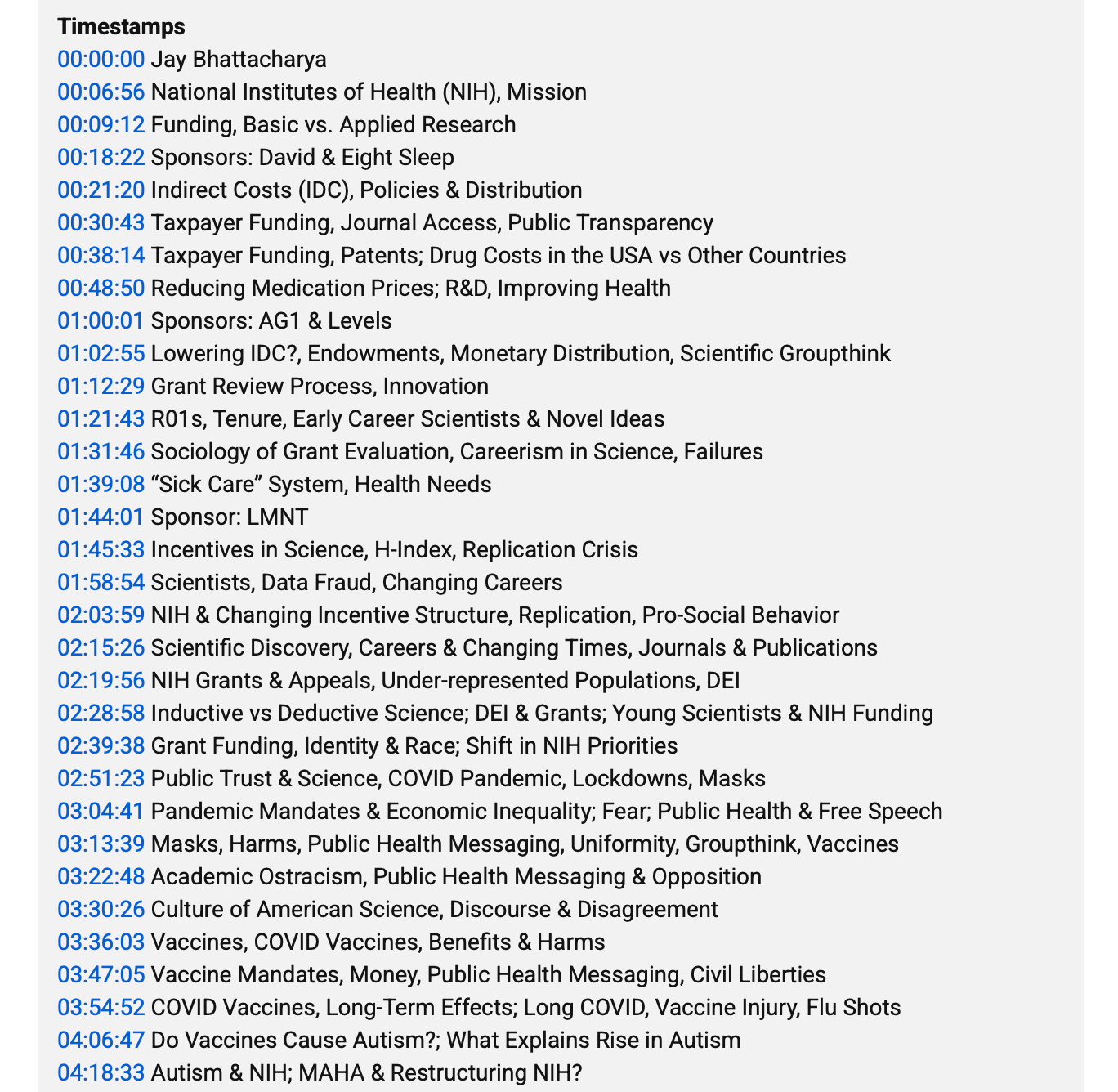
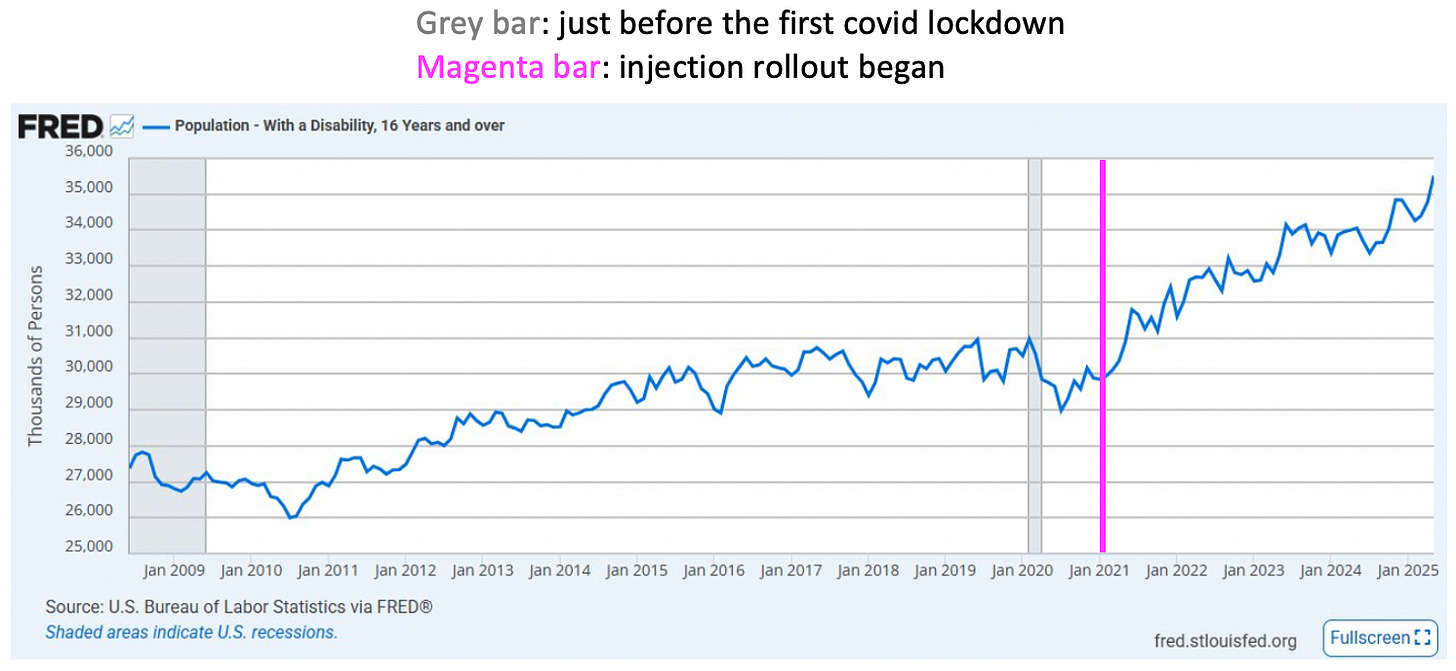
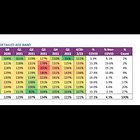


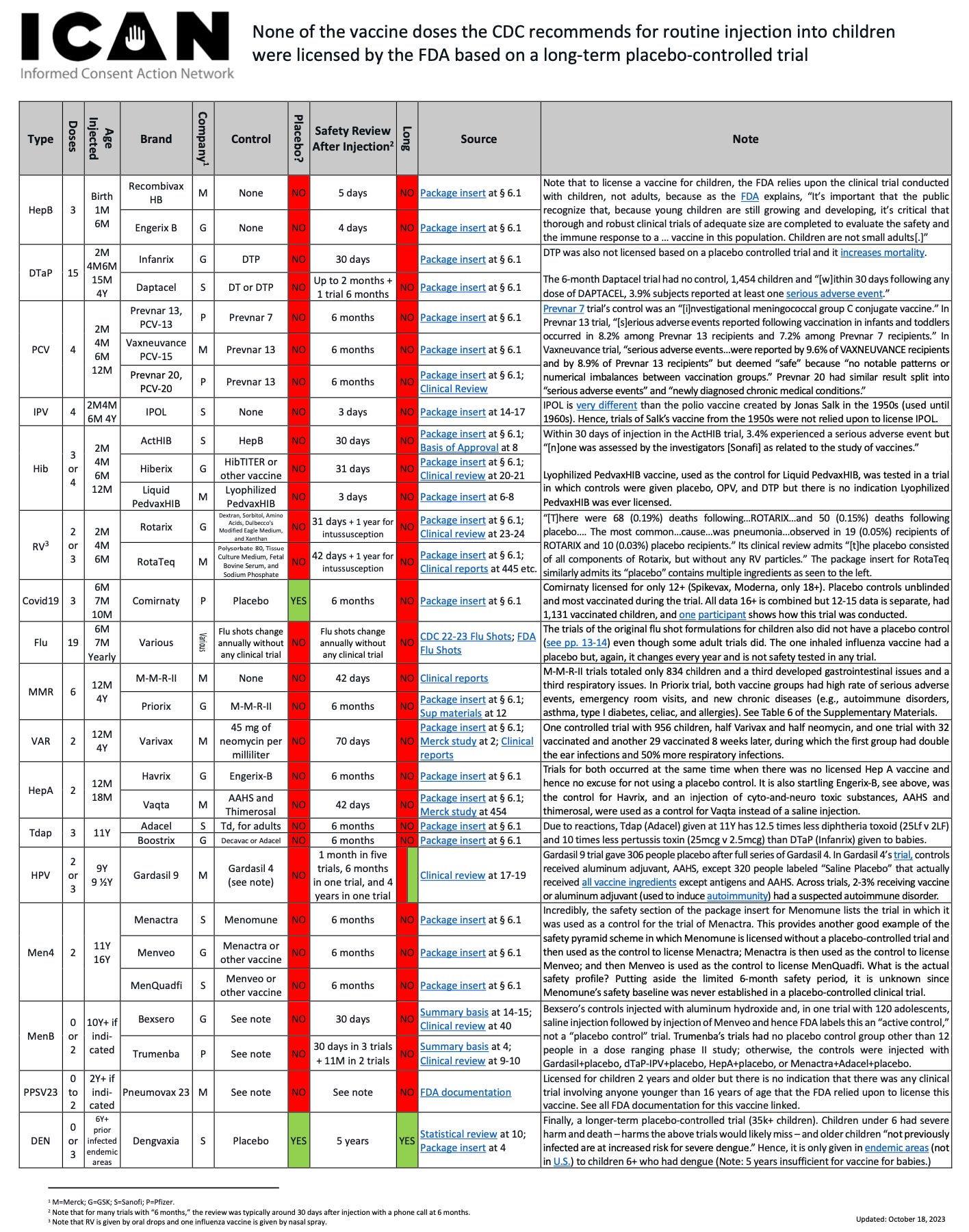

![[SPCI-9] "We were told... a story of a lethal virus, a story that only vaccines could save us, a story where vaccines were safe and effective and rigorously tested. But what if that story was wrong?"](https://substackcdn.com/image/fetch/$s_!T0oV!,w_140,h_140,c_fill,f_auto,q_auto:good,fl_progressive:steep,g_auto/https%3A%2F%2Fsubstack-post-media.s3.amazonaws.com%2Fpublic%2Fimages%2F3b9a0bfd-afd9-4c58-877e-41a3faef29dc_1440x1168.png)
